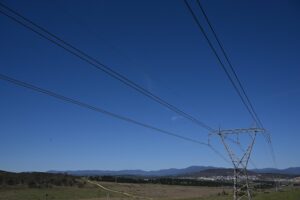A few weeks ago at the A2SE Summer Study conference in Sydney, there was a vigorous discussion abut the role of the media in the policy debate about clean energy and energy efficiency. Just why was it so hard to get the message across about the value of new technologies? One answer may be that we are obsessed with the price of everything, and the value of nothing.
John Rolfe, from the Daily Telegraph, gave a solid defence of his paper’s focus on cost of living issues when addressing issues such as climate policies and clean energy initiatives. He was particularly proud of his role in killing off solar feed in tariffs in NSW, which he noted had caused bills for all households, and particularly his paper’s readers, to increase. And he was equally proud of his paper’s support of the One Big Switch program, which had helped tens of thousands of consumers find cheaper electricity contracts with a new provider.
But should he really be proud of that achievement? Is switching really one in the eye for the electricity retailers? Not as much as you would think: The discounts paid to a fraction of the electricity users, and the fees paid to the likes of One Big Switch, and encouraged by the retailers themselves under the name of “competition”, is funded by a massive cross subsidy on all households, including those who either can’t switch suppliers, or are just not aware that they could.
In Queensland, this subsidy is set at 5 per cent of electricity bills to be paid by all. That 5 per cent is added to the bills of every consumer – and it is one and a half times more than the cost of the renewable energy target and other green energy schemes, according to the data provided by the Queensland Competition Authority.
The trouble is, switching between suppliers on the basis of cost only – and funded by a cross subsidy – does absolutely zero to help the energy system evolve from the inefficient, centralised model that rewards dirty and polluting fossil fuels. It merely encourages retailers, networks and generators to produce, transport and sell as many electrons as they can – to the perpetually rising cost of the consumer.
This 5 per cent addition to the electricity bill is known as “headroom”, and is additional to the normal retail ”margin”, which is designed to give electricity retailers enough money to pay their costs and get a decent return. In fact, retail costs, including this “headroom”, account for 20 per cent of the average Queensland electricity bill.
The electricity retailers want this headroom, in Queensland and another regulated state such as NSW, to be made much, much bigger, in the “interests of competition”. The bigger the headroom, the higher the bills paid by all consumers, so the bigger the discount to be offered to a minority of users – to no cost of the retailers.
“Competition in the electricity market is based on discounting – without headroom it will be difficult for retailers to induce customers to switch,” AGL Energy wrote in a submission. It wants a “much higher headroom” allowance than the 5 per cent recommended by the QCA, so it can receive more revenue and use that to offer bigger discounts. The Energy Retailers Association agrees with the principal of this money-go-round. It says “sufficient head room is essential to offer customers with a competitive market offer whilst maintaining costs.”
Large users and consumer groups say this is absurd.
Some groups such as cane growers, who deal with a monopoly regional retailer and have no avenue to switch providers or obtain discounts, are livid that they are being hit with extra costs and subsidising discounts to other users.
MSF Sugar said in a recent submission to the Queensland CompetitionAuthority that the headroom was delivering “millions of dollars’ in extra profits to regional utility, Ergon Energy. AgForce, which represents agricultural employees, said much the same thing: Users in rural and regional areas paying this headroom were simply cross-subsidising other users or delivering extra profits to Ergon.
The Queensland Council of Social Services has questioned the headroom, saying it was neither economically efficient or consistent with the overall transition to more cost- reflective price signals. It could see “no additional longer term benefits”, said it would merely force prices up until competition drove them back down to where they were before, and disadvantaged those who had no access to competitive offers, or lacked “awareness or understanding” of the other options available to them.
The Public Interest Advocacy Centre is also dismissive of the logic of “increasing prices in order to increase competition and thereby place downward pressure on prices”. It says allowing for headroom in such a way “seems to place the interests of retailers above those of consumers.”
Even the QCA seems to agree with that: “While the Authority notes that including an explicit allowance for headroom in notified prices provides a “free kick” to those retailers with large numbers of non-market customers, those customers able to access a market contract can avoid this additional cost.”
So that’s just too bad for those who can’t. It’s a little like the massive cross subsidies paid by those who don’t have, or can’t afford, air conditioning units to those who do – again to the benefit of the network providers who get paid more money to build more poles and wires, or provide more electricity. It perpetuates a business model that is becoming redundant, or at least should be.
Meanwhile, the value of new technologies – energy efficiency and decentralized generation, such as solar – that could reduce the spiraling costs of the centralized hub and spoke models continue to be ignored. Maybe it’s time that The Daily Telegraph took up the story and did the battler a real favour on cost of living.








